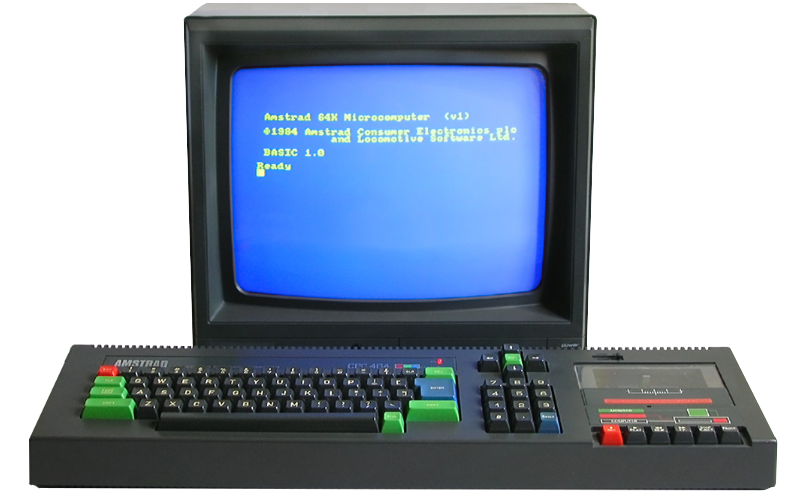Amstrad CPC

Made in U.K. by Amstrad in 1984
4041
games
4unreleased
Released games per year
Amstrad is a company created by Alan Michael Sugar in the United Kingdom. Amstrad means Alan Michael Sugar TRADing, CPC means Color Personal Computer (even if some of them included a green screen / monochrome monitor).
The first Amstrad CPC was created in 1984 and called Amstrad CPC 464 (64K RAM, 32K ROM, includes a tape drive). It quickly became a success - especially in UK, France, Germany and Spain - because it was a powerful, cheap (a CPC with the screen costed as much as a C64 without a screen) and easy-to-use machine (an "all-in-one" machine: the tape/disk drive and monitor were included with the computer and easy to connect).
In 1985, Amstrad released the Amstrad CPC 664 (the same as CPC 464, but the tape drive was replaced by a disk drive) then the Amstrad CPC 6128 (128K RAM, 48K ROM, disk drive).
In 1990, Amstrad released the Amstrad CPC 464+ and Amstrad CPC 6128+ (the same as CPC 464 and CPC 6128 plus a cartridge drive), then the GX4000, a console which is actually a modified 6128+ computer. GX4000 only works with cartridges and was sold with the driving game Burnin' Rubber.
Another one is the Amstrad CPC 472 (72K RAM, tape drive) which was released only in Spain.
All these models were sold at approximately 3 millions unit over the world.
The figures that come after CPC (464, 6128, etc...) have a particular signification :
- 1st number : 4 means tape drive, 6 means disk drive.
- last numbers : RAM in Ko. (64, 72 or 128).
- + : means that a cartridge drive is included.
#
The first Amstrad CPC was created in 1984 and called Amstrad CPC 464 (64K RAM, 32K ROM, includes a tape drive). It quickly became a success - especially in UK, France, Germany and Spain - because it was a powerful, cheap (a CPC with the screen costed as much as a C64 without a screen) and easy-to-use machine (an "all-in-one" machine: the tape/disk drive and monitor were included with the computer and easy to connect).
In 1985, Amstrad released the Amstrad CPC 664 (the same as CPC 464, but the tape drive was replaced by a disk drive) then the Amstrad CPC 6128 (128K RAM, 48K ROM, disk drive).
In 1990, Amstrad released the Amstrad CPC 464+ and Amstrad CPC 6128+ (the same as CPC 464 and CPC 6128 plus a cartridge drive), then the GX4000, a console which is actually a modified 6128+ computer. GX4000 only works with cartridges and was sold with the driving game Burnin' Rubber.
Another one is the Amstrad CPC 472 (72K RAM, tape drive) which was released only in Spain.
All these models were sold at approximately 3 millions unit over the world.
The figures that come after CPC (464, 6128, etc...) have a particular signification :
- 1st number : 4 means tape drive, 6 means disk drive.
- last numbers : RAM in Ko. (64, 72 or 128).
- + : means that a cartridge drive is included.
#
tech info
resolution: 160 x 200 x 16 colors, 320 x 200 x 4 colorsmemory: 64K / 128K RAM, 16K VRAMCPU: Z80 4MHzsound: AY-3-8912All Amstrad systems
| Amstrad CPC | 1984 |
| Amstrad PCW | 1985 |


